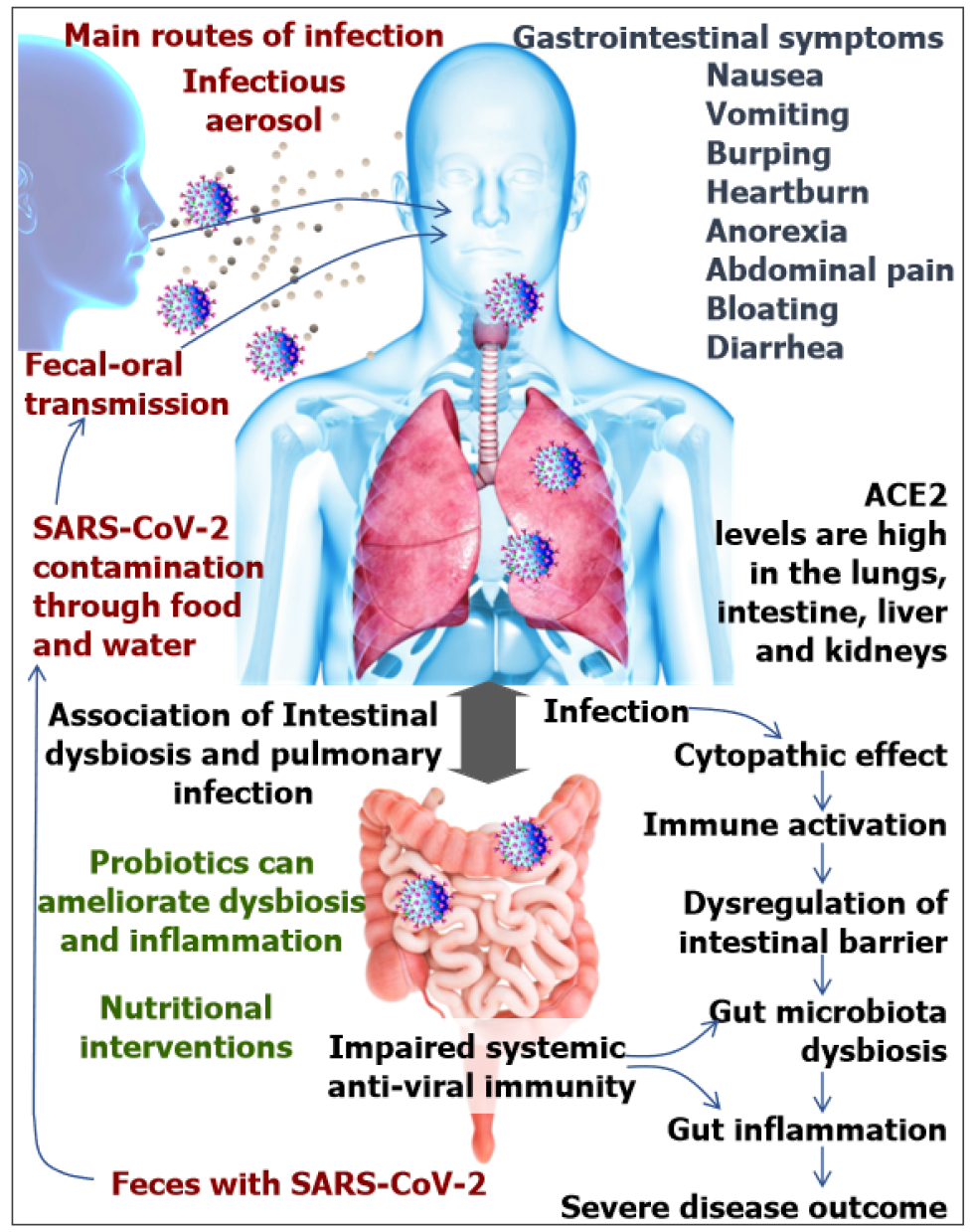Copyright
©The Author(s) 2021.
World J Gastroenterol. Dec 14, 2021; 27(46): 7925-7942
Published online Dec 14, 2021. doi: 10.3748/wjg.v27.i46.7925
Published online Dec 14, 2021. doi: 10.3748/wjg.v27.i46.7925
Figure 2 Illustrative model showing gastrointestinal infection routes and symptoms.
The figure shows the main routes of infection. Infectious respiratory droplets or aerosols deposited on the nasal, oral, or conjunctiva may lead to person-to-person spread. SARS-CoV-2 is detected in feces of infected patients may infect by fecal-oral transmission. The right upper section of the figure also discusses the significant gastrointestinal symptoms associated with COVID-19 infection. The receptors (angiotensin-converting enzyme 2 and TMPRSS2) of SARS-CoV-2 are detected on various organs, especially the lungs, intestine, liver and kidneys. The right lower section describes the infection process leading to intestinal symptoms. After SARS-CoV-2 infection, cytopathic effect occurs due to infection and associated immune activation leading to compromised intestinal barrier function, microbial dysbiosis, and severe symptoms. Many studies have established the link between healthy intestinal flora and the gut-lung axis. COVID-19 severely induces the intestinal microbiota dysbiosis and affects the gut-lung axis, especially the immune response. Probiotics and appropriate nutritional supplements can help protect from SARS-CoV-2 associated symptoms[10,14]. Some images (Free Stock Media) are downloaded from Canva.com using subscription. ACE2: Angiotensin-converting enzyme 2.
- Citation: Roy K, Agarwal S, Banerjee R, Paul MK, Purbey PK. COVID-19 and gut immunomodulation. World J Gastroenterol 2021; 27(46): 7925-7942
- URL: https://www.wjgnet.com/1007-9327/full/v27/i46/7925.htm
- DOI: https://dx.doi.org/10.3748/wjg.v27.i46.7925









